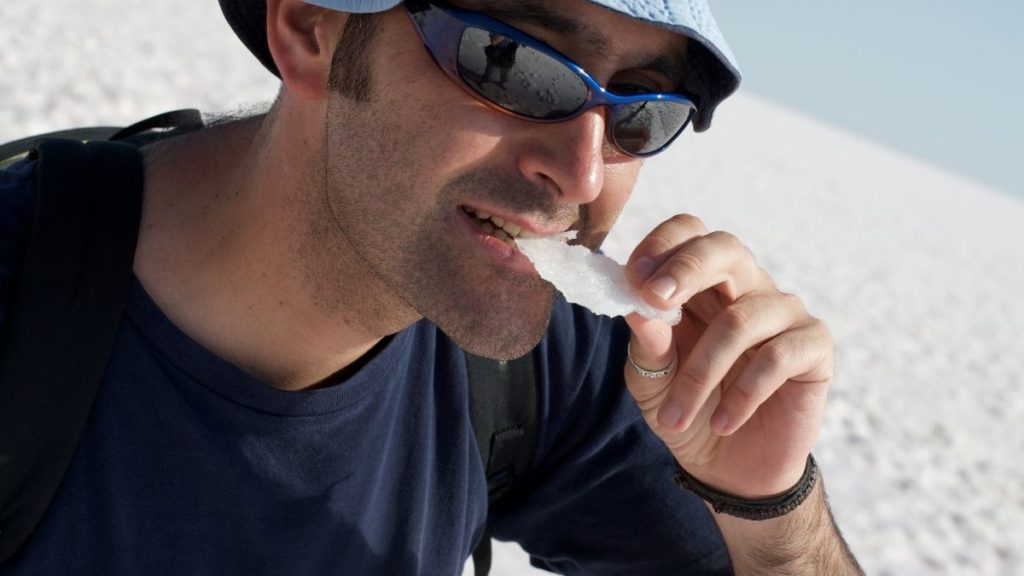
Believe it or not, there is food in a desert – if you know where to look. Many deserts are filled with life and a lot of that life can be consumed by humans. That said, even though many deserts are filled with life, there are certainly some deserts that are absolutely barren.
The deserts that we’ll be talking about are the Sonoran Desert along California, Arizona, and Mexico; the Great Basin Desert along Nevada, California, Idaho, Utah, and Oregon; as well as the Chihuahuan Desert along Mexico, Texas, New Mexico, and Arizona.
You may not be able to find all of the desert foods I mention in all of the above listed deserts, but there’s a good chance you’ll find one or two. We’ll be talking about some of the animals that reside in some of these areas, not just plants. I’ll mention 5 plants and 5 animals.

First, some words of caution about any wild edible:
- Leave some behind for other animals, and for those foods to reproduce.
- Use proper precautions as needed, such as gloves.
- When first trying a wild edible, make sure you’ve 100% positively identified it before consuming. Get a wild edibles book of your area and take it with you when outdoors (more on books toward the end).
- When first trying a wild edible, taste just a little bit at first to see how it may affect you. Just because it’s edible, doesn’t mean you won’t have adverse reactions. Some people may be allergic, or it may upset their stomach, or whatever the case may be. But it could also be perfectly fine. Try a little at a time at first, wait 24 hours and see what happens. Then try more.
- Make sure it’s prepared properly. Some wild edibles, especially animals, need to be prepared first before eating. Make sure you can properly identify if anything is wrong with it, like unusual spots on an organ or a berry or plant looks diseased.
- Pay attention to your surroundings. Many plants are eaten by animals. There also could be insects around the plants that could harm you.
Have fun! Identifying wild edibles and hunting wild game is exciting and being prepared is important.
10 Foods You Can Find in a Desert
All sand, hot sun, and no water? Not so fast. Humans have lived in desert-like environments for centuries. There’s food in a desert – if you know where to look.
1 – Cactus
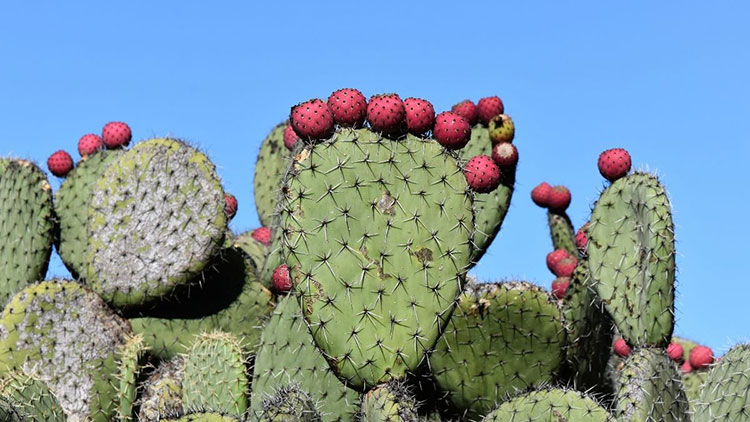
There are many types of cacti, but specifically the prickly pear cactus has a few edible parts. The pads can be eaten. You can even use the pads to boil water inside of it. The flowers can be eaten. Keep in mind, whenever you pick a flower, that flower won’t create fruit.
Lastly, the prickly pear, the fruit of the prickly pear cactus. It is so delicious and can be eaten as is… right after you get the stickers off.
Use a stone to rub the sticks off, use fire to burn them off or use your knife to scrape them off. Use caution whenever touching a cactus or its fruit, as there are many stickers all over it. I would suggest using a leather glove.
2 – Mesquite
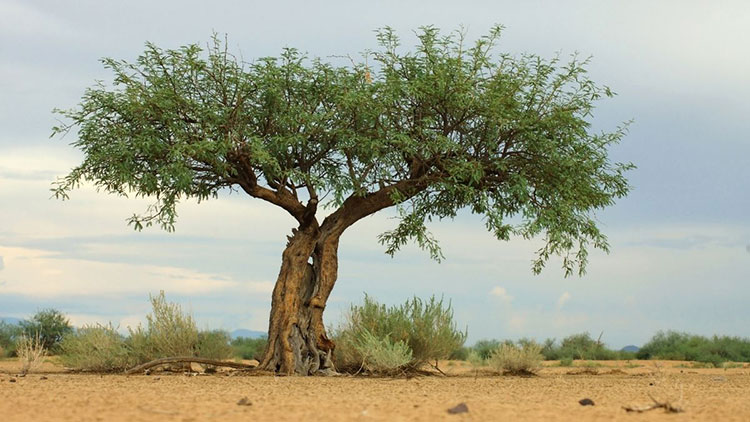
Mesquite trees come in a variety of types. The mesquite trees in Texas are much taller than the ones in Arizona. Though all the varieties produce the same beans, some might look slightly different than the others. But they’re all edible.
You can pick them when they’re green and eat the beans from the pods. One of the best ways to eat the pods is by letting it dry on the branch, they should go from green to a tan-ish color. When they’re dried, pick them, and grind them into flour.
The mesquite pods can also be roasted, ground, and used as coffee. It has no caffeine, but it has a caffeine effect because of all the natural sugars it produces. It’s quite smooth and delicious.
3 – Yucca
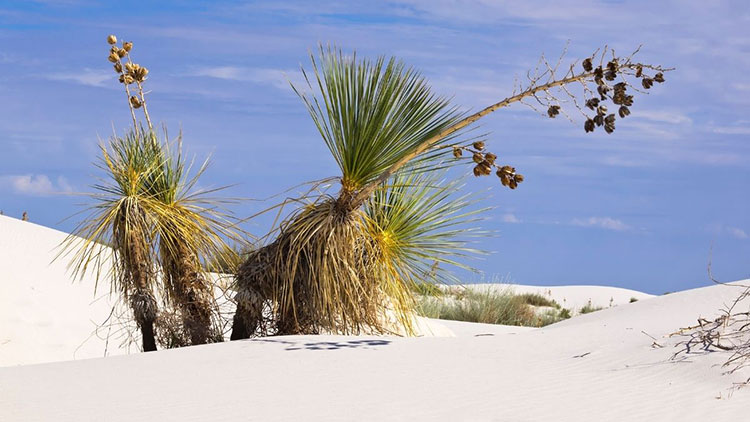
Yucca is an extremely powerful plant. Almost all of it can be used for something. It’s a truly bountiful plant.
The roots can be ground up and made into a soap. The flowers can be eaten raw. The fruit can be roasted and eaten. The spines can be made into rope.
4 – Cholla
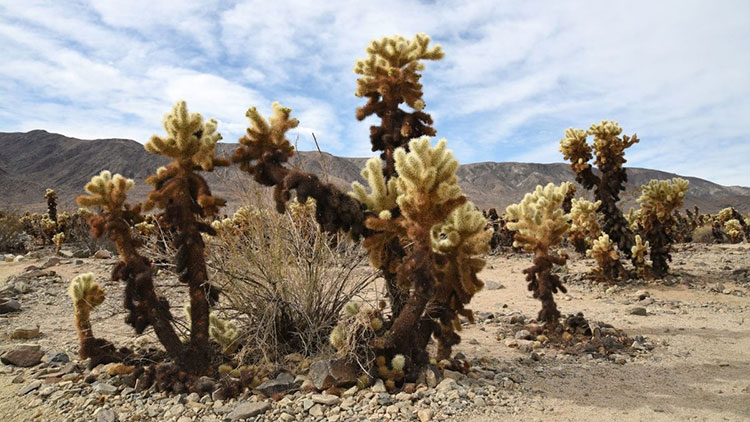
This is a type of cactus; I’ve seen a few different varieties of this. The ones in Texas look different than the ones in Arizona. However, they both produce edible pods and fruit.
One variety produces a red berry. Some of the green cactus can also be eaten. Remove the spikes like you would with the prickly pear, boil or roast then eat.
Another variety produces a yellow fruit which can be boiled and roasted then eaten. Again, be sure to remove any spikes before consuming. Use leather gloves when touching.
5 – Beautyberry
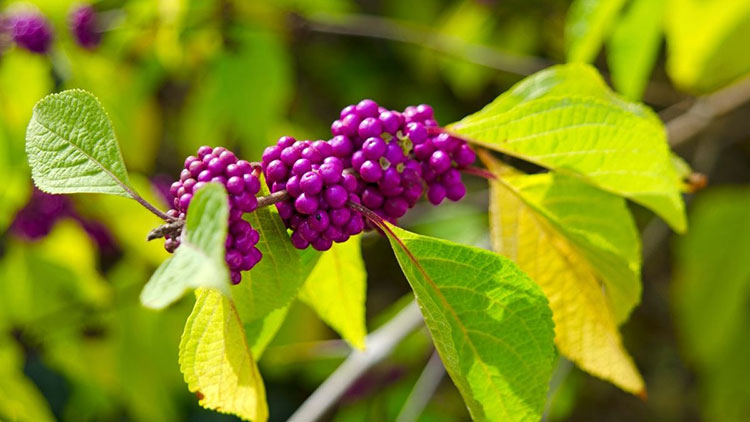
This plant is most common in Texas, but when found, it is abundant. Be careful with this plant, though, as it might upset some people’s stomachs. Try just a little bit at a time.
Beautyberry can also be made into jelly and wine.
6 – Deer
Deer are usually quite abundant in desert areas. You’ll most commonly find whitetail and mule deer but there could be other varieties depending on the type of desert and your specific region. It can be a little tricky to hunt deer in the desert because of the flat landscape. If you can find tracks, spot, stalk and even bait, these are all going to lead to success in time.
7 – Hog
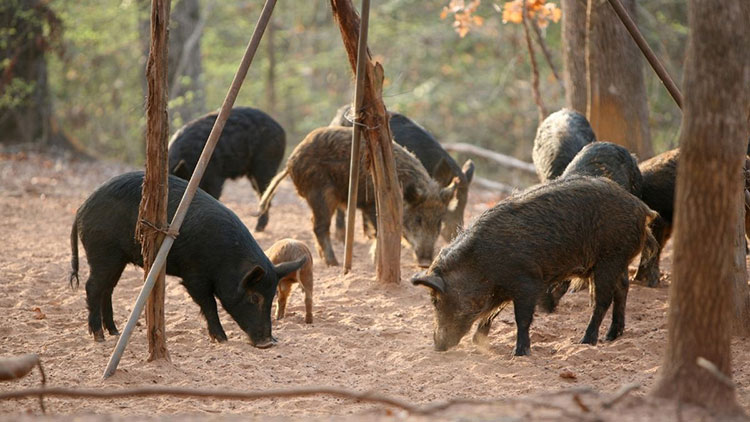
Wild hogs are a nuisance in many parts of the US. They usually come out at night, and you may have to bait them. Hogs can be aggressive so just be careful.
In Arizona, you can find the Javelina. They are active at night (for good reason in a desert), and exist on a diet of flowers, berries, and prickly bear cactus. With a bit of stealth night hunting, they can feed you.
8 – Fish
Yes, fish! If you can find a large body of water, there will most likely be fish in it. Odds of finding a large body of water in the desert? Pretty slim.
Still, there are many opportunities to fish in a desert scenario. Though I wouldn’t rely on fishing as a number 1 edible, it’s certainly an option.
The most peculiar fish in a desert is not in the list of deserts I opened with, however. It’s the lung fish, which can be found in Africa. Rare but interesting.
9 – Jackrabbit
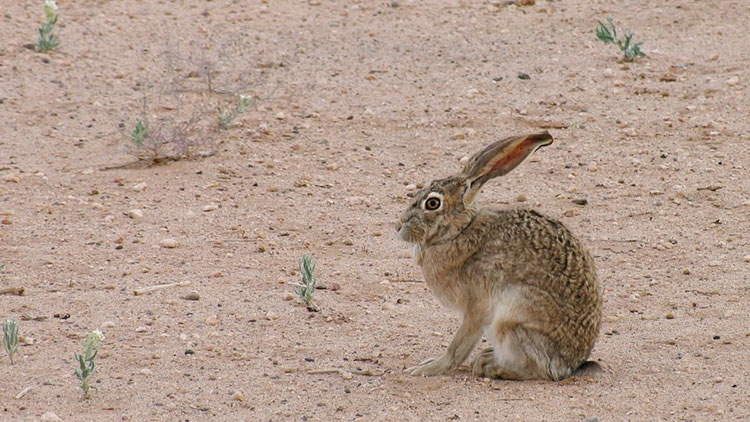
There are a few varieties of rabbits found in the deserts, but jackrabbit is very common. Jackrabbits don’t burrow and they don’t really have a ‘home’, they essentially jump from bush to bush to hide and sleep. They are most active in the morning and evening.
The best way to hunt jackrabbits is first, getting to a high vantage point, laying down and gaze over the area. Create a quick whistle noise and look for the tips of their ears poking up over the bushes. This is them listening to the sound. This will tell you where they are. If close enough, you can try to aim through the bushes, or try to stalk them or flush them out and follow them to the next bush. They move quickly and it’s almost impossible to track them via prints, so make sure you’re paying attention to where they run next.
10 – Lizards
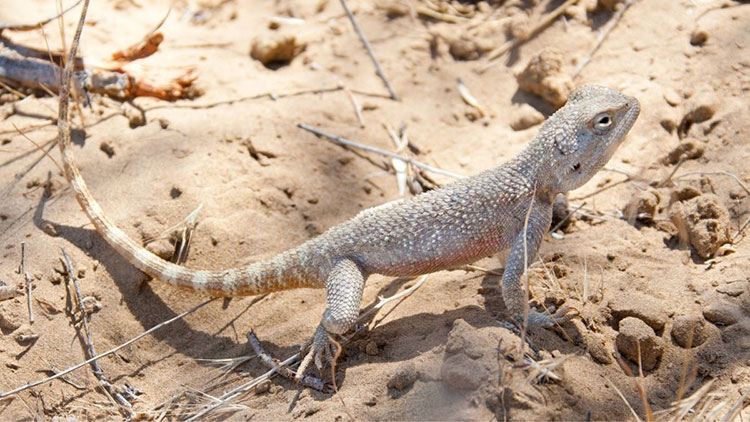
If it walks it’s edible (usually). While it may not be your first choice, lizards are commonly abundant in many desert regions and can be a great source of food. In fact, iguanas are often eaten in Central America.
There are a few ways to catch a lizard. The first one is by “fishing” for it. Place bait on the end of a fishing line, extend the line out and wait behind a bush. When it’s taken the bait, reel it in – dinner!
Another way is to use a standard mouse trap. Fruit should work to attract it. This may attract other animals, even ants, but this will certainly work for lizards, too. I once caught a frog in a mouse trap.
You could also throw a blanket over the lizard when you see it and try to wrangle it that way. Then you’ll simply have to club it.
Further Reading
Finding food in a desert isn’t necessarily difficult, it’s just knowing how the desert works and how to identify and find what you need, like any area, really. Your biggest problem in a desert, as you can probably imagine, is not food but water. Know how much water you need and how to find it in a desert.
Want to learn more about survival in a desert environment? Consider these books:
- Mark Johnson (Author)
- English (Publication Language)
- SAS Desert Survival contains specific details pertinent to survival in desert areas including finding water and preserving supplies, shelter from heat and cold, hunting hazards and navigation. 160 pages 4" x 8 1/4" ISBN: 1-930-983-11-5
- Davies, Barry (Author)
There are a ton more wild edibles that can be found in the desert, but this is just the top 10. What are some of your favorite desert foods?




2 comments
Interesting.
I never realized that American Beautyberry grew where water was sparce. We have lots of it in the Ozarks. I’ve sampled a bit of it and found the taste very pleasant. I’d long heard it could be vicious to the stomach, so I ate only a few at a time.
I’ve spent lots of time in the American deserts. As your article states, water is the most pressing concern. The good news is that, if you find water, you are guaranteed to find food. Everything in the desert is moving to or from water. The rabbits, snakes, gila monsters, blue quail, and honeybees all know where the water is; even if it’s a little trickle. Find a water hole and wait…dinner will show up.
Nice article.
Yes that’s true, find the water, find the most abundance of foods. Though a lot of food can be found outside of water areas, desert plants know how to survive without water for long periods of time and thrive with little water needed, same with the animals. However, of course, there’s a lot more abundance around water with stronger, bigger plants, and of course, animals. Thanks for reading.